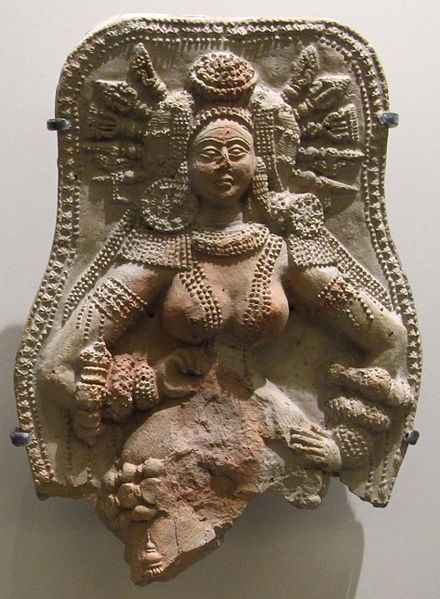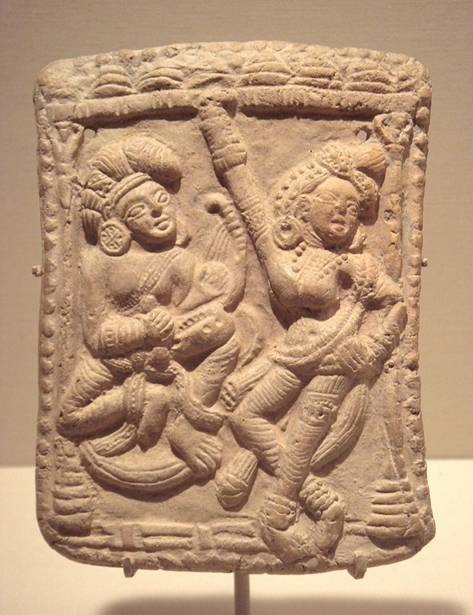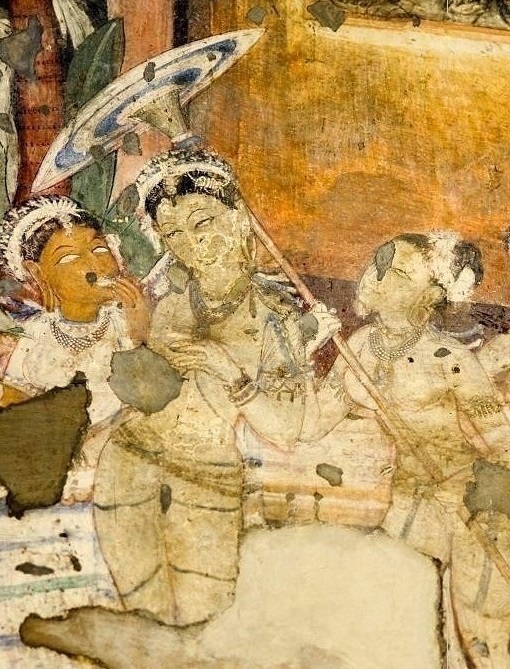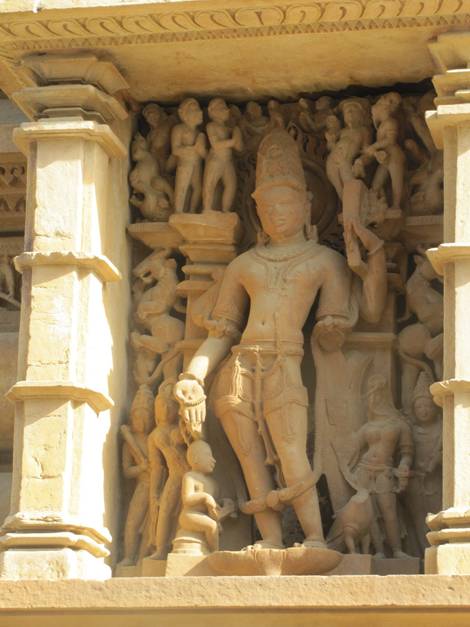Jewellery has always occupied an important place in the social and cultural life of India. Initially men and women used natural material for beautification of the body like leaves and flowers followed by beads using other type of material. In course of time, metals like gold was used to make ornaments which continues to this day.
The figure of the bronze dancing girl found at Mohenjodaro, one of the Indus valley sites depicts her wearing necklaces and a number of bangles. Gold, silver and ivory, copper, bone, shell and terracotta have all been used to make ornaments. Excavations at Harappa and Mohenjodaro yielded variety of beads which were strung together and worn as armlets, bracelets, necklaces and girdles.
Vedic texts make enough references to jewellery and its use to decorate the body. The Ramayana and Mahabharata, India’s great epics describe jewellery elaborately. When Sita daughter of King Janaka gets married to Lord Rama, she is bedecked with ear ornaments, nose ornament, chandrahaar , bracelets, anklets with bells etc. her head ornament the chudamani is believed to have been given to her father by Kubera, the God of wealth himself. Lord Rama wears pearls on his crown, and as ear-rings and around his neck. Yudhistira loses a rare pearl during his gambling game with the Kauravas in the Mahabharata.
Buddhist and Jaina literature mention ornaments. The Jataka tales mention jewellery including those worn by elephants and horses. The Kalpasutras, Jaina texts describe different ornaments.
In ancient India, following the Indus valley times and the Vedic era, the ascendancy of the Mauryan dynasty unified the Indian subcontinent. Trade routes opened and rare and new gems came to India. The Arthshastra written in 3rd century B.C by Kautilya describes jewellery types. Jewellery was worn both by men and women. The yakshi from Didargunj, Patna wears a headband, a pendant, girdle on her waist and anklets. Terracotta figures from this age also depict jewellery. Bharhut, Sanchi, Bodhgaya and Amaravati are attributed to the Sunga and Satavahana phase of Indian history. Their art reveals a variety of ornaments used on head,ears,neck,arms,waist and feet. Motifs were drawn from nature or religion. Short necklaces were called Kanthi and in case it had a large pearl as a centre-piece it was called sirshak. A necklace having alternate gold and pearl beads was called Apavartika. Ratnavali was a necklace having many gems, pearls and gold beads. Shankhavalayaswere made of conch, ratnavalayas set with precious stones, jalavalayas were bracelets with perforations. Mekhala,Kanchi,rasana and sarasana were different type of girdles. Various names have been assigned to anklets such as manjira tulakoti, nupura, padangada,hamsaka and palipada and kinkini for the ones with bells. Trade was prevalent between South India and Rome at the beginning of Christian era and the gold which came in was converted into jewellery. Jewellery of Satavahanas is described inGathasaptasati written in Prakrit by a ruler. A circular jewel was placed in the centre of the usnisha(turban), kirita(a crown with jewels) was worn too. Women wore the chudamani and the makarika(crocodile shaped jewel) was also very popular. Ear kundalas were in vogue. The phalakahara consisting of gold slabs as very popular among necklaces.
The jewellery of Taxila and adjoining townships of Sirkap and Sirsukh have revealed a blend of Indian, Greek, Persian and Greco-Roman in design and form. This is because the city was built and destroyed many times between 500 BC to 500 A.D. by invaders like the Greeks, Mauryas of Magadha, the Bactrian Greeks, the Sakas, the Parthians, the Kushanas and the Huns.
The Sungas replaced the Mauryan dynasty. Bharhut sculptures are seen wearing a variety of ornaments. Ear-rings were termed Karnika or kundala if they were ring shaped. A single string of beads was called ekavali. Armlets were very much in use. Bracelets were also worn, girdles were worn by women. Hair ornaments kept hair in place. Sakas, Parthian and later the Kushanas followed the Sunga rule. This had an impact on the society of ancient India as they came from Central Asia and influenced indigenous art and craft of India.
Fertility deity. Sunga dynasty, Chandraketugarh.
I, Sailko [GFDL (http://www.gnu.org/copyleft/fdl.html) or CC BY-SA 3.0 (https://creativecommons.org/licenses/by-sa/3.0)%5D, via Wikimedia Commons
Kanishka, a Kushana ruler patronised art and his rule was from Bactria to Magadha and Kashmir to Saurastra. Gandhara was an important centre with Roman influence and the other was Mathura which was purely Indian. Jewellery has been excavated from Taxila which include gold, copper, bronze pendants, bracelets, bangles and armlets. Kushan jewellery is evident in the Gandhara and Mathura sculptures. The railing pillars at Mathura depict Yakshi with nupura(anklets), mekhala(girdles), hara(necklace), valaya(bracelets), bangles, ear-rings and finger-rings. The excavations at Chandraketugarh in West Bengal of the Sunga era too have revealed many fertility goddesses, mother and child figures etc. The figures have adorned bodies with elaborate coiffure and jewellery. Head dress and fashion of hair dressing is evident form figures found at Pandu Rajar Dhibi in west Bengal. They are seen wearing a conical helmet like hairdo; and also a fan shaped one! The mauryan hairstyles depict neatly combed hair and hairdos with bi-cornate arrangement. Decorative hairpins are seen on Sunga-Kushana figures. along with jewelled bands. used to tie the braid. These head ornaments are though to be the prototype of the kiritamakuta. Forehead ornaments like tikli can be seen on women. The tikli can be seen having radiating beaded strings. Kundalas or ear ornaments were worn by both men and women. Over-sized ear studs with floral motifs have been depicted too. The neckpieces are a study in itself. Women wore neck collars like the hasuli or a choker. The necklaces are the haras. Long beaded necklaces are seen on the figures, some reaching the navel. The valayas or bracelets were worn by both men and women. They were heavy and the keyura or armlet also used to be worn. Girdles were worn at the waist either single or of more than one string made up of discs spaced by beads.
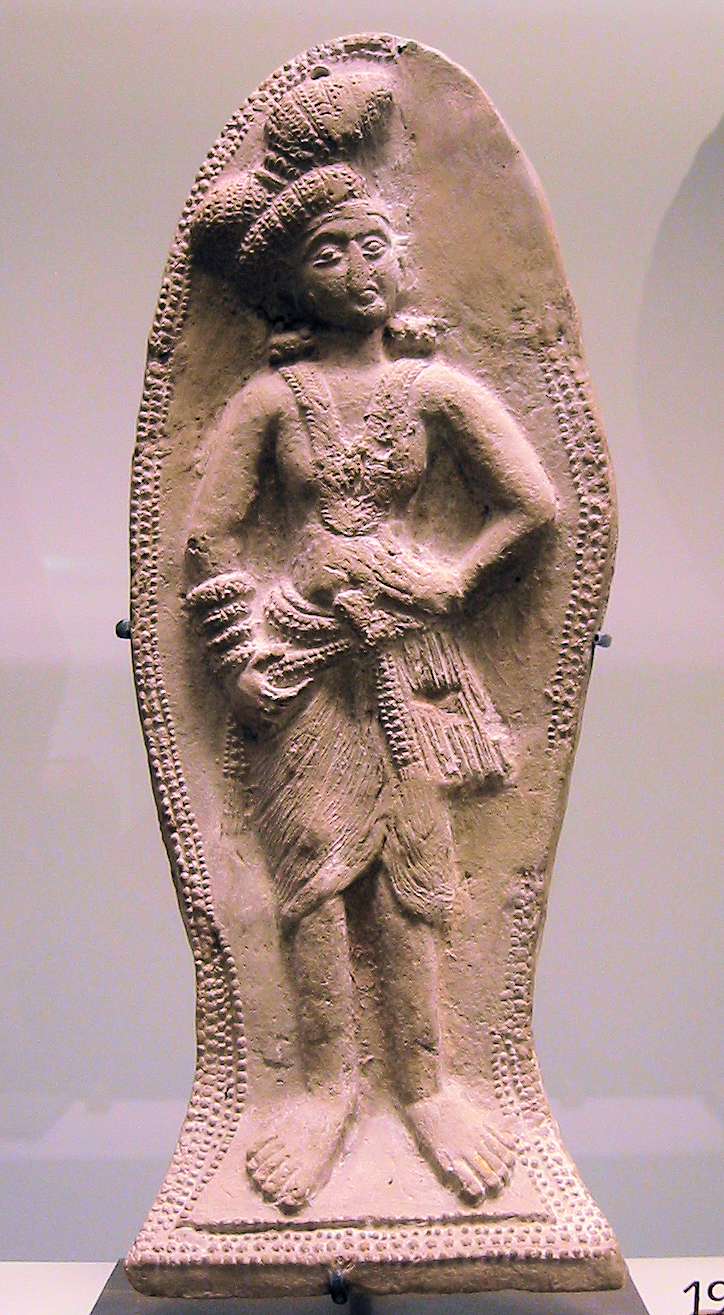
Sunga masculine figure, Sunga 2nd-1st century B.C, Chandraketugarh, Musée Guimet,Paris.
By No machine-readable author provided. World Imaging assumed (based on copyright claims). – No machine-readable source provided. Own work assumed (based on copyright claims)., CC BY-SA 3.0, https://commons.wikimedia.org/w/index.php?curid=1062807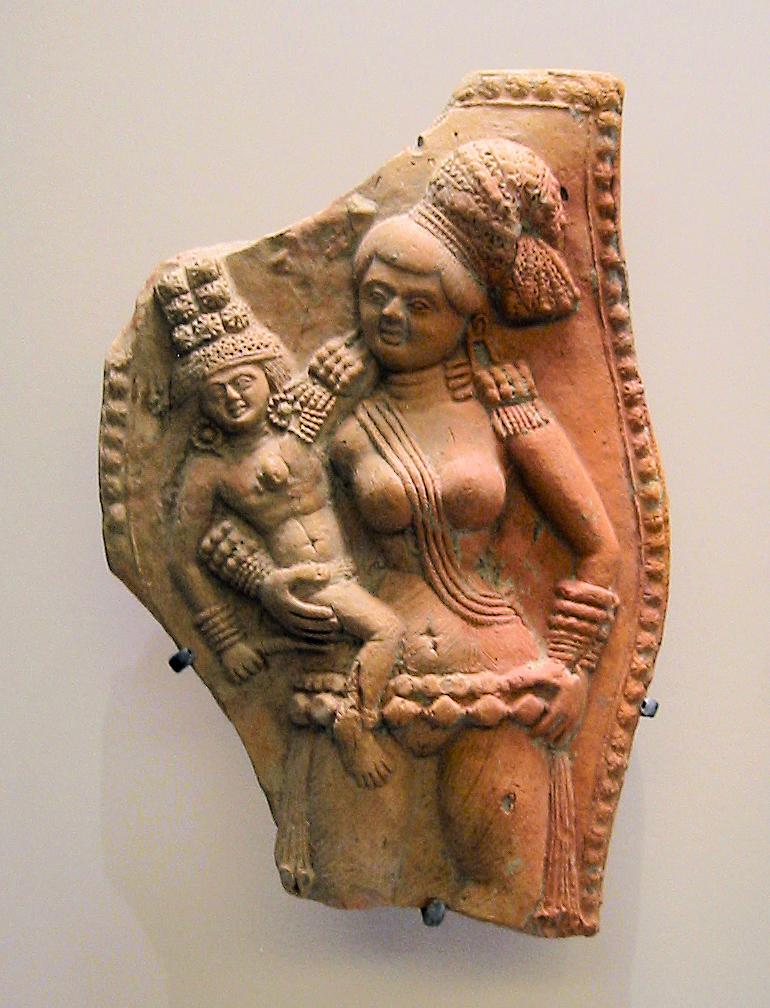
Mother and child, Sunga dynasty, Chandraketugarh, West Bengal.
By No machine-readable author provided. World Imaging assumed (based on copyright claims). – No machine-readable source provided. Own work assumed (based on copyright claims)., CC BY-SA 3.0, https://commons.wikimedia.org/w/index.php?curid=1062813
Yaksha and yakshis, who were semi -divine beings and resemble human figures, were associated with emblems,animals, birds and mounts. The Yakshis which have been discovered at the archaeological sites of Mauryan and Sunga period outnumber the yakshas (male). Seen with hairpins, these yakshis were common both in Bengal and North India. They are seen wearing ear kundalas, sirastraka, necklace and heavy bangles.
Plaque of a Yakshi (female nature spirit), India, Bengal, 3rd-2nd century B.C, terracotta, Honolulu Academy of Arts, U.S.A.
By Hiart (Own work) [CC0], via Wikimedia Commons
The late medieval temples of Bengal have many figures of both men and women, flora and animals. the jewellery is noteworthy. The animals like the horses and elephants are seen wearing jewellery too ! Adornment seems to have been away of life. The Bankura horse also wears jewellery like the Chandmala on its forehead.

Jor Bangla temple, Bishnupur,Bankura,West Bengal.
By Dyutiman86 – Own work, CC BY-SA 4.0, https://commons.wikimedia.org/w/index.php?curid=59899298
References :
- H.Clifford Smith/The art of Jewellery; New Delhi :Bharatiya Kala Prakashan,
- M.L.Nigam/Indian jewellery;New Delhi : Roli Books, 1999.
- Jamila Brijbhushan/Masterpieces of Indian jewellery; Bombay : D. B Taraporewala and Sons,1983.
- Terracotta art of Bengal/Biswas,S.S,Delhi : Agam Kala Prakashan,1981.
- Bengal temples/Dutta, Bimal Kumar , New Delhi : Mushiram Manoharlal,1975.
- wikipedia.org
Posted by:
Soma Ghosh
© author

